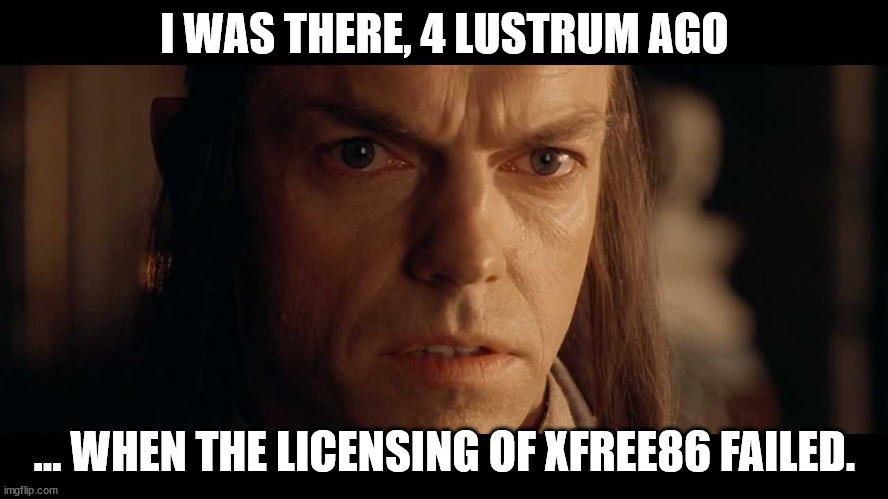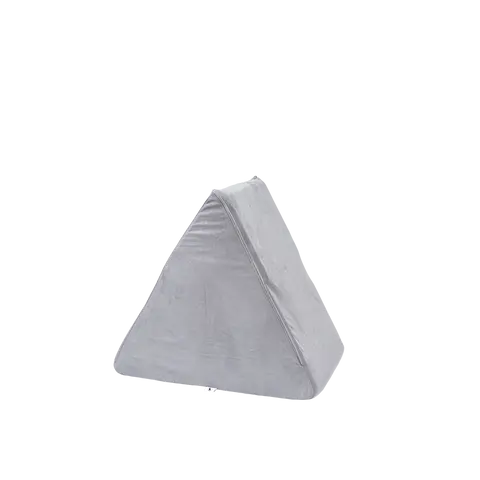If anyone wants to give an ELI5 or a link to a video that ELI5 I’d be incredibly thankful
I swear that all the stuff I find is like super in depth technical stuff that just loses me in no time flat
Programs running graphically (Firefox, your file browser, etc.) need a way to tell the system “draw these pixels here”. That’s what the display server does; it takes all these applications, works out where their windows are and manages that pixel data.
XOrg has historically been the display server in common use, but it’s very old and very cobbled together. It generally struggles with “modern” things that must people expect today. Multimonitor setups, vsync, hdr and all that. They work, but support is hacked together and brittle.
Wayland is a replacement for XOrg that was designed from scratch to fix a lot of these issues. But it’s been an uphill battle because XOrg is the final boss of legacy codebases.
tl;dr They’re both software that manages drawing pixels from applications to the display.
XOrg is the final boss of legacy codebases.
Pretty sure the IRS still holds that title.
The TLDR was really helpful NGL
So it’s software that handles software wanting to display things on the screen. Because having each piece of software do it itself would be not only chaos but a massive security concern. And it’s a big deal because it fixes (by replacing) the old software with something that’s easier to work with than the old ways of doing things (due to all new code that’s not spaghetti that’s hacked together over decades).
Am I close?
Because having each piece of software do it itself would be not only chaos but a massive security concern.
Not really, the main point is that (most) apps don’t know where they are on the screen, whether they’re minimized, on the active workspace, … and they don’t care either. That’s the responsibility of the window manager.
The app tells the display server “I need a window to display these pixels” and that’s it. And the window manager, well, manages these windows.
On the topic of security, X11 doesn’t handle security at all, that’s one of the main issues. So any graphical app can read the other windows’ pixels, grab everything you type, everything you copy, … OTOH Wayland isolates apps so they can’t do that by default. Apps that really need to (screenshot apps, …) can use “portals” to ask for these permissions.
How do I check which one my OS uses?
It’s not os based, usually you can switch between the 2 on your login screen. To check if you are in a wayland session, type this in a terminal:
echo $XDG_SESSION_TYPEThe answer should be
waylandorx11
deleted by creator
Initial release of xorg was 2004
Yeah, but XOrg was forked from XFree86.

And the X11 Protocol was released in 1987. We’re not replacing Xorg specifically as much as we are replacing X11.
Good lord, it’s been 4 lustrum already? My, how the olympiads fly.
Xorg is from 2004, but it is an implementation of X11/X Windows which dates as far back as 1984. Wayland replaces both of that.
That hill has a name. GNOME. Wayland’s governance on the whole is a fucking disaster (alternatively, the best sitcom you’ll ever see), but GNOME is a particularly malignant growth on the project’s taint, with completely baseless NACKs that have delayed some protocols by months, and missing/incomplete features in Mutter.
Like you are 5: Wayland is a bunch of commands that your computer needs to draw the things that appear on your monitor.
The important part that they are a bunch of new commands. We had old commands for this things, but they were written a long-long time ago, and computers evolved a lot since that, we can’t fix the old commands anymore.
deleted by creator
X1 was released in 1984, 2004 is when x.org foundation was formed.
Waland is the British half of the mega corp Waland-Yutani. Sometimes called Wa-Yu, or simply “the company”
Founded by Charles Bishop Wayland, the totally not evil billionaire industrialist, Wayland LLC was known for energy production, computer technology, and planetary terraforming before it was acquired in a hostile takeover by the Japanese Yutani corp in 2099.
Aw dang. You beat me to it.
Super-short version:
The system that Linux uses to draw anything on the screen (showing the desktop, your windows, their contents, etc) is called a display server.
Linux has been using a display server called the X Window System (or x11) since its inception, but it’s ancient and has limitations that can’t be fixed without breaking everything that depends on it.
The Wayland compositor is the new display server that will be replacing x11, improving security and adding support for newer features like HDR. It’s nearly ready for a full release now, and is already the default for some Linux distributions.
Since the 80’s, Linux has been using a display server called the X Window System
This is, of course, not true, given that Linux did not yet exist in the 1980s.
Unix-like systems that predate Linux did already use it in the 1980s.
It’s a standard to display programs and let them interact with each other. The old way is X11 which is a big program handling all of that. With Wayland every desktop and window manager (like KDE, Gnome, i3wm, Sway, etc) take up the role of Xorg themselves, giving them better control.
Every program has to be changed to work with Wayland. Those that don’t run through Xwayland, a program mimicking the old X11 standards on Wayland.
These guys are nuts. Wayland is a town in the Midwest of the USA.

Wayland is the replacement for X11, it’s getting pretty close to what I consider pretty good, I only have 2 more desires for Wayland, I’d like it to be able to remember where my windows were placed, and I’d like scaling to not suck.
Remembering window placements should be possible on KDE with Kwin rules. Maybe your window manager has something similar.
I’m using KWin, and you could for example start every Firefox window at the same specific position, but it would be better if it could just be where I put it last time, because even if I pop every window in the same place or not, the instant you have more than one window, it’s useless. Remembering would be preferential.
Easy. Just create a rule not matching a particular window and set position to “Remember”.
Wayland is a display protocall. What does that mean? Well, it describes how a program on linux tha displays graphics to a user should work. Examples of programs which do this include kwin, mutter, and sway. It’s why you see stuff on your monitor and why when you open an app, it’s in a window, which can be moved.
All that along with a good amount of supplementary tools, makes up wayland.
Currently we are transitioning from a 40 year old protocal called X11 which has many issues and few people willing to work on. Wayland offers a codebase without the spaghetti, more security, easier feature development, and to a point backwards compatibility.
Eli5: Wayland is a new way for Linux to make things appear on your screen, things like windows, graphics, and even your whole desktop.
The old way was called Xorg. It has been around for a very long time, and works pretty well, but the code is veryyyy messy and many developers wanted a new and easier way to make things appear on your screen, so they made Wayland.
(It’s debatable how much easier Wayland actually is vs Xorg, but at this point most major distros are switching over to Wayland, so it’s a moot point)
So you wanna go from home to school. The whole distance/trip can be done on a bus or your moms car. That’s a means of transportation. But, now people are creating a train and soon you will have another means of transportation that you can go to school with, by train.
That’s it, Wayland is another means of transportation (newer) than the older means of transportation that existed for a long time, x11 or xorg.
The route is how can applications show stuff on a screen, what transport should they use.
Okay I think I’m following so far
And the whole “show stuff on screen” thing
I’m guessing it’s kinda like: you’ve got a couple people sitting there wanting to play with Legos and only so much room to play. They don’t have direct access to the play area because of security reasons so they have to ask someone to place the Legos for them. Wayland, X11, and Xorg are all different people they can talk to to place the Legos in a way where no one is fighting for space.
So basically it’s a new way for programs to negotiate who has what part of the screen?
I’m guessing Wayland is either more feature rich or lighter on resources and that’s why it’s a big deal?
Yeah, it’s a new way that programs use to draw their stuff on the screens.
In the middle usually are other stuff that abstract away that part from normal application development, so in general, most applications don’t need to care with the low level thing that is being used to draw their stuff, but there is always somethings that some apps will do to bypass or expect to work in a certain way, so sometimes changes and time are need to adjust those applications to play well with the new way of drawing.
The core idea of why Wayland matters is that it is designed to take advantage of the hardware features and how hardware is designed in this century. On xorg, since it was designed around the architecture and expectations of what people thought things should work in the 70s, it was becoming really hard to add features related to how newer hardware worked. Things like multiple gpus, prime architectures, multiple surfaces/screens with multiple aspect ratios and dpis, varying refresh rates, taking advantage of hardware acceleration for graphics drawing, etc, were all really hard things to do because the code had multiple concepts not applicable to the modern age. So, essentially developers were already bypassing 99% of the internals of xorg architecture and hacking things in a very hard way. They basically decided/experimented with stripping apart all the things they didn’t need and didn’t matter and reduced it to the most basic and core thing that mattered: “how to push these pixels to that surface”.
It ended up being a successful experiment, in that it showed it was possible to do.
Now, in the current world, there are solutions that need to be implemented to bring some features up to speed since the wayland thing is so core and barebones. And this is a good thing. It allows developers and applications to think really hard about what they need to do and how they should do and how things should work across all toolkits and desktop environments. Obviously this takes time to make decisions and ensure everyone is onboard, experiment and reiterate on it until good solutions are found.
This last point is what makes end users frustrated when trying wayland because some things are lacking or not ready yet. For the general use, users without really specific needs, they can already use wayland now, but for others they can’t because of their particular needs or specific hardware situation.
If xorg is working for you, then there’s no need to worry. If it’s invisible to you then most likely you shouldn’t care, because the desktop environments are changing their sessions to use wayland by default and most users will not perceive any difference. If users see problems and then notice that it’s related to using wayland they can choose explicitly to use the xorg version since it will still work for a while.
Hope I didn’t make it too complicated now.
The part about negotiation is a bit off-track.
On one end, in the kernel, there’s a big array of pixels that is a picture that gets drawn on your monitor (or monitors). On the other end are a bunch of programs that want to draw stuff, like pictures of your friends and web pages. In between is software that decides how the stuff the softwares want to draw get put into the pixel array. This is Wayland; it was written to replace Xorg, which is what did that job for decades prior to Wayland.
If you understand the concepts of Xorg and window managers, Wayland + a compositor = Xorg + a window manager. Wayland abdicated a lot of work to the compositors, making it simpler and easier to maintain (and compositors more complex and harder). But together, they all do basically the same job. If one of the compositors implemented a network protocol, then you could declare equivalency.
Display Server + Compositor + Window Manager = Wayland Compositor = Implementation of Wayland Protocol
Display Server = Xorg = X11 Implementation
Xorg + Separate Compositor + Separate Window Manger = the X11 equivalent of a Wayland Compositor
It’s an entirely different design than X11. It gains features not possible to implement on X11, while losing many features exists in X11. People that like those new features love Wayland, while people that use those missing features hate it.
deleted by creator
I have been sort of following Wayland’s development for over 10 years now. I have been using Wayland for over 2 years now. I have been reading and watching various lengthy arguments online for and against it. I still don’t feel like I actually know it even is, not beyond some handwavey superficialities. Definitely not to the extent and depth I could understand what X11 was and how to actually work with it, troubleshoot it when necessary and achieve something slightly unusual with it. I feel like, these days, you are either getting superficial marketing materials, ELI5 approaches that seem to be suited at best to pacify a nosy child without giving them anything to actually work with, or reference manuals full of unexplained jargon for people who already know how it works and just need to look up some details now and then…
Maybe I’m getting old. I used to like Linux because I could actually understand what was going on…
They replace the penguins with whales.
Okay, I’m not OP but a follow up question that occurs to me reading the explanations of what Wayland is, is are there any distros or spins of distros that use Wayland by default?
I think SteamOS3 does (though you can only use that on a Steam Deck)
it is a window protocol like x11. It is like x11 but new











